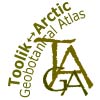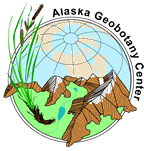Toolik Lake Permanent Vegetation Plots
Toolik Lake Permanent Vegetation Plots
Illustration by John Adams 1991 ©
Walker D.A. and Barry N. 1991. Toolik Lake permanent vegetation plots: site factors, soil physical and chemical properties, plant species cover, photographs, and soil descriptions. Data Report 48, Department of Energy R4D Program, Institute of Arctic and Alpine Research, University of Colorado, Boulder, CO.
Table of Contents
- Data Report (PDF, 6.36 MB)
- Introduction
- Methods and data summaries
- Acknowledgments
- References
- Figures:
- Figure 1. Plot location map - PDF
- Tables:
- Table 1. Preliminary vegetation classification based on habitat and dominant species and sample numbers for each type - PDF - MS Word
- Table 2. List of vegetation communities and microsites sampled in 1989 - PDF - MS Word
- Table 3. Legend for the environmental variables - PDF - MS Word
- Table 4. Environmental data for permanent plots
- abiotic data - PDF - MS Excel
- biotic data - PDF - MS Excel
- Table 5. Soils data for Toolik lake permanent plots - PDF - MS Excel
- Table 6. Toolik Lake permanent plot species data - PDF - MS Excel
- Appendices:
- (see Tables 1, 2, 4, 5, and 6 for links to individual plots; each plant species name links to a descriptive webpage with photos)
Introduction
This data report is a summary of environmental, soil, and vegetation information collected from 81 study plots at the Toolik Lake research site, located in the southern Arctic Foothills of the Brooks Range, Alaska (68°37'N, 149°32'W). It brings together for easy reference all the available information collected from the plots. This information is being used for the classification, mapping and analysis of the geobotanical factors in the Toolik Lake and Imnavait Creek region. A separate equivalent data report is available for 73 permanent plots at Imnavait Creek (Walker et aI., 1987).
Methods and data summaries
Reconnaissance survey, sampling dates, and plot locations
A reconnaissance survey was conducted in August 1988 to define the primary vegetation types in the Toolik Lake area. Unknown plants were collected and many informal partial relevés were sampled with reference to spectral signatures on a 1:50,000-scale color-infrared photograph. A total of 22 preliminary vegetation types were defined based on habitat and dominant species (Table 1).
Formal relevé sampling for the plots in this data report was done during the period 1-26 August 1989. An attempt was made to sample at least three relevés for each of the types defined in 1988, but this was not possible in all cases (Table 1 and Table 2).
The plots were located in homogeneous areas of vegetation using the centralized replicate method of the Braun-Blanquet approach to vegetation classification (Mueller-Dombois and Ellenberg, 1974; Westhoff and van der Maarel, 1978).
Nearly all of the plots are permanently marked. The exception is plot SWT-55. The plots are marked with 48-inch (122-cm) wooden stakes, and aluminum tags at the base of the stakes with the plot numbers. Some of the stakes have broken off since sampling. We intend to replace all of the wooden stakes with tall plastic stakes.
Forty of the plots are located along transects as follows:
- West-facing toposequence of Itkillik II glacial outwash and retransported hillslope deposits on the south side of Toolik Lake: (from top of hill) SWT-7, 8, 9, 10, and 11.
- East-facing toposequence of slope that includes Itkillik I and Itkillik glacial till and retransported hillslope deposits on the south side of Toolik Lake: SWT-18, 19, 20, 21, 22, 23, 24, and 77.
- South-facing toposequence on Itkillik II till and retransported hillslope deposits on the west side of Toolik Lake: SWT-46, 45, 44, 41, 40, 43, 39, 42, 38, and 37. These are in mixed positions on stone-stripes and inter-stripe sites. Plots 38 and 37 are in a colluvial basin at the base of the hill.
- North-facing toposequence on Itkillik II till and retransported hillslope deposits: SWT-48, 47, 49, 50, 51, 52, 53, 54, and 81. Plot SWT-48 is on a ground-squirrel mound, and most of the sequence is through a deep snowbed.
- Water-track transect on the south side of Toolik Lake: SWT-80, 32, 35, 75, 78, 27, 79, 36, 73, 74, 64. Plots SWT-80, 35, 74, and 64 are on frost scars.
The remaining plots were located around Toolik Lake to sample the diversity of vegetation types of the region (Figure 1, Table 2).
Sampling methods
Plot size, species cover estimation, and photographs
The plots have no fixed size because our main objective was to obtain a complete species list for each relevé.
Photographs were taken of each plot (see Appendix). Usually photos were taken of (1) the general site, (2) closeup of the vegetation, and (3) closeup of the soil.
Site factors
The site of each plot was described according to the variables listed in Table 3 plus measurements of thaw depth, estimates of cover of bare soil, rocks, and the major plant growth forms. These data are summarized in Table 4.
Soils
Field sampling
Soil pits were dug adjacent to the plots and described and classified according to the U.S. soil taxonomy [Soil Survey Staff, 1975]. Soil samples were collected from each horizon and air dried in the laboratory. Bulk density and soil moisture samples were taken from the sides of the soil pits or from large soil plugs for the wet soils using a 240-ml soil can.
Laboratory analysis
Laboratory analyses were conducted at the Colorado State University Soil Testing Laboratory, Fort Collins. The laboratory's routine analysis was run on all samples [pH (saturated paste); NO3 (KCl extract); P, K, Zn, Fe, Cu, Mn (NH4HCO3-DTPA extract); lime estimate, texture estimate (by hand); and organic matter (Walkley-Black or ash method)]. Selected samples were analyzed for cation exchange capacity (C.E.C.); percentage gravel; particle size (hydrometer method), CaCO3 equivalent; Ca, Mg, Na, K (NH4OAc extract); and soil moisture retention (field capacity at 1/3 BAR and permanent wilting point at 15 BAR). These methods are described in Page et al. (1982) and Klute (1982). The soils data are in Table 5.
Vegetation
A large area surrounding each plot marker was searched until no new species were encountered. Estimates of vegetation cover used the Braun-Blanquet cover-abundance scale (r = rare; + = common but less than 1 % cover; 1 = 1-5%; 2 = 6-25%; 3 = 25-50%; 4 = 51-75%; 5 = 76-100%). Cover-abundance values are relatively broad subjective classes, and were determined by estimating cover within the general area of the stake. Voucher collections were made for all vascular plants, bryophytes, and lichens occurring in the plot. Vascular plants were verified by Dr. Dave Murray, University of Alaska Herbarium. Bryophytes were verified by Dr. Dale Vitt, University of Alberta. Lichens were verified by Dr. Joanne Flock at the University of Colorado Herbarium. Table 6 contains the raw species data.
Acknowledgments
This work was funded by the Department of Energy's R4D (Response, Resistance, and Resilience to, and Recovery from Disturbance in arctic ecosystems) (Grant No. DE-FG02-84ER60242.A006). Curt Westburg, Nancy Auerbach, and Marilyn Walker assisted in the field. Liz Arnold, Diane Andrews, Nan Lederer, Leanne Lestak, and Diane Lorenz assisted with the preparation of this report.
References
-
Error 1129: Host 'grotto.geobotany.uaf.edu' is blocked because of many connection errors; unblock with 'mysqladmin flush-hosts'

